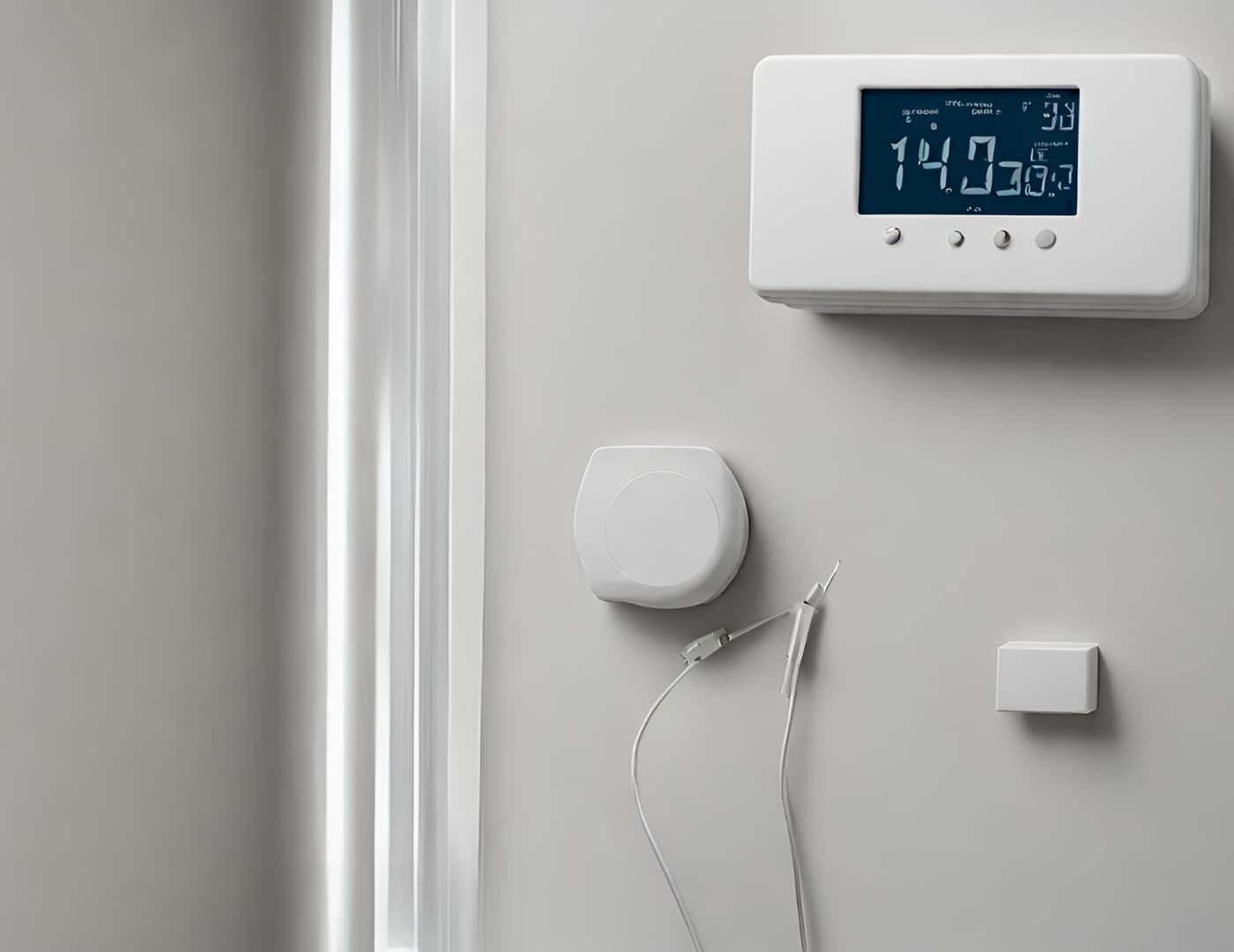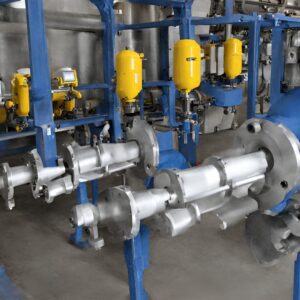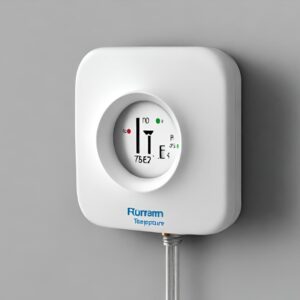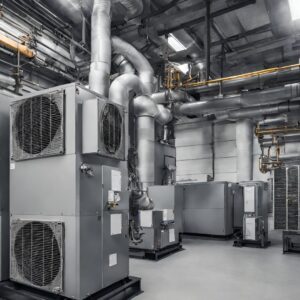In this blog post, we’ll delve into the pivotal role that room temperature sensors play in modern farming. From explaining their significance to discussing their benefits and future possibilities, we’ll uncover how room temperature sensors are optimizing crop growth and securing our global food supply.
The Importance of Temperature in Agriculture
Temperature, often overlooked, is a silent determinant of crop success. Whether it’s the tender shoots of spring or the bountiful harvest of autumn, every stage of plant growth demands precise temperature control. Deviations, even by a few degrees, can spell the difference between a fruitful crop and disappointing yields.
The influence of temperature on plant growth is profound. It affects the rate of photosynthesis, enzyme activity, and nutrient absorption. Temperature extremes can lead to stress in plants, resulting in reduced growth, lower yields, and susceptibility to diseases and pests. Moreover, temperature fluctuations can impact the flowering and fruiting stages, affecting the overall crop cycle.
The Role of Room Temperature Sensors
Enter room temperature sensors, the unsung heroes of modern agriculture. These sensors are small, unobtrusive devices that tirelessly monitor the ambient temperature in agricultural settings. They are the vigilant sentinels that ensure crops are never too hot or too cold, thereby safeguarding their health and productivity.
ACI room temperature sensors are designed to provide accurate and real-time data on temperature conditions. They are strategically placed in greenhouses, growth chambers, storage facilities, and even open fields to continuously monitor temperature variations. This data is then used to make immediate adjustments, ensuring that crops remain within the optimal temperature range.
Benefits of Room Temperature Sensors in Agriculture
The advantages of employing room temperature sensors in agriculture are multifaceted. Farmers and growers are discovering that these devices offer a plethora of benefits, ultimately resulting in improved crop quality and higher yields.
- Enhanced Crop Yield and Quality: By maintaining an optimal temperature range, room temperature sensors contribute to healthier and more robust crops, resulting in higher yields and improved quality. For example, in controlled environment agriculture, such as greenhouses, sensors ensure that temperature and humidity are ideal for specific crops year-round, resulting in consistent and high-quality yields.
- Improved Resource Efficiency: Precise temperature control minimizes resource wastage, including water and energy, making agriculture more sustainable and eco-friendly. Sensors prevent overuse of resources by ensuring that they are applied only when necessary. This not only reduces costs for farmers but also conserves valuable resources.
- Reduction in Crop Diseases and Pests: Room temperature sensors help create conditions less favorable to pests and diseases, reducing the need for chemical interventions. By maintaining an optimal temperature and humidity, sensors create an environment that is less hospitable to common crop pests and pathogens, leading to healthier plants.
- Increased Sustainability: Sustainable farming practices are bolstered by the judicious use of room temperature sensors. They play a critical role in reducing the environmental impact of agriculture by conserving resources, reducing chemical use, and minimizing waste.
Types of Room Temperature Sensors
Agriculture relies on a variety of temperature sensors to meet its diverse needs. These sensors come in various types, each with its own advantages and applications.
- Thermocouples: These sensors are rugged and versatile, making them suitable for a wide range of agricultural applications. They consist of two dissimilar metal wires connected at one end, and their temperature measurement is based on the voltage generated when there is a temperature difference between the two wires.
- Resistance Temperature Detectors (RTDs): RTDs are known for their high accuracy and stability. They are often used in precision agriculture where precise temperature control is essential. RTDs work by measuring the change in electrical resistance of a material as its temperature changes.
- Thermistors: Thermistors are highly sensitive to temperature changes and are commonly used in monitoring soil temperature. They offer a rapid response to temperature fluctuations and are cost-effective.
Farmers select the type of sensor that best suits their specific needs and the agricultural setting in which they operate.
Monitoring and Control Systems
Room temperature sensors are not standalone devices; they are integral components of sophisticated monitoring and control systems. These systems allow farmers to remotely access temperature data, make real-time adjustments, and receive alerts when conditions deviate from the desired range. The result is fine-tuned temperature control, optimized for crop health.
These systems are often equipped with user-friendly interfaces that provide farmers with valuable insights into temperature trends, helping them make informed decisions about crop management. For example, in a greenhouse equipped with room temperature sensors, a farmer can remotely access data and make adjustments to heating or cooling systems to maintain the desired temperature range, ensuring optimal growing conditions.
Moreover, these systems can be set to trigger alarms or notifications when temperature conditions fall outside the predetermined thresholds. This proactive approach allows farmers to take immediate action, preventing potential crop damage.
Challenges and Considerations
Implementing room temperature sensors in agriculture comes with its own set of challenges and considerations. Farmers need to carefully plan and strategize to ensure successful integration and operation of these sensors.
- Sensor Placement: Proper sensor placement is crucial for accurate temperature monitoring. Sensors should be strategically located in areas that represent the temperature conditions experienced by the crops. This may require careful consideration of factors such as airflow, shading, and proximity to heat sources.
- Calibration: Regular calibration of room temperature sensors is essential to maintain accuracy. Calibration ensures that the sensors provide reliable temperature readings. Farmers should follow manufacturer recommendations for calibration intervals and procedures.
- Maintenance: Routine maintenance of sensors is necessary to ensure their long-term functionality. Dust, dirt, and debris can accumulate on sensors, affecting their performance. Regular cleaning and inspection are essential to keep sensors in optimal condition.
- Data Security and Privacy: As with any technology, data security and privacy are important considerations. Farmers should take steps to secure the data generated by room temperature sensors to protect valuable information about their crops and operations.
Future Trends and Innovations
The future of agriculture with room temperature sensors holds promise. As technology advances, sensors are becoming more intelligent, with the potential to integrate with AI and machine learning. This means predictive temperature control, where sensors anticipate temperature needs and make adjustments proactively. Emerging trends in agriculture include:
- AI-Powered Decision Support: Artificial intelligence can analyze large volumes of sensor data to provide farmers with real-time insights and recommendations for optimizing crop growth.
- IoT Integration: The Internet of Things (IoT) will enable seamless connectivity between sensors, machinery, and data analytics platforms, creating a more interconnected and efficient farming ecosystem.
- Climate-Adaptive Agriculture: Sensors will play a pivotal role in helping farmers adapt to changing climate conditions by providing early warnings and enabling adaptive responses.
- Precision Agriculture: The integration of room temperature sensors into precision agriculture techniques will lead to more targeted and efficient resource use, reducing waste and environmental impact.
Conclusion
Room temperature sensors have quietly but definitively reshaped agriculture. From enhancing crop quality and yield to reducing resource waste and bolstering sustainability, these unassuming devices are at the forefront of modern farming. As we look ahead, we can anticipate further innovations and an increasingly interconnected agriculture sector, where room temperature sensors play a central role in securing our global food supply.




